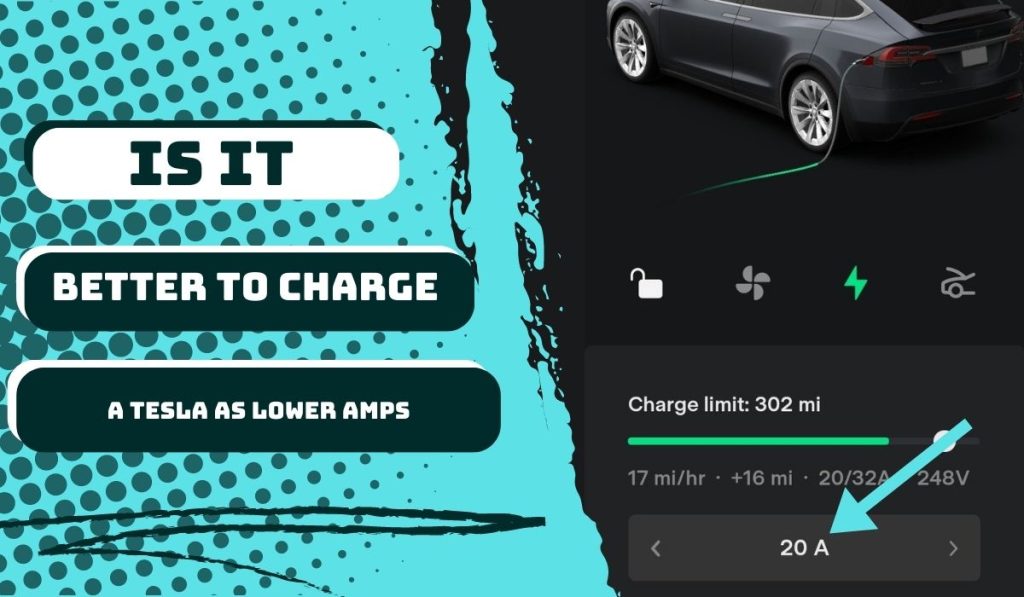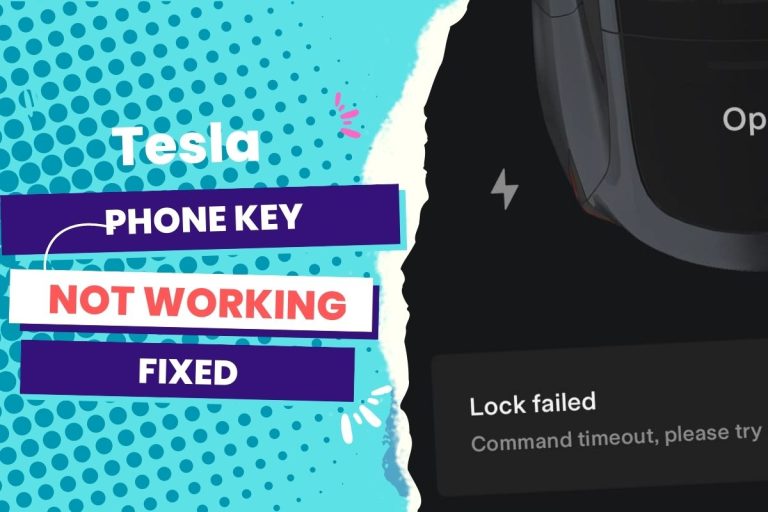Charging your Tesla at a lower amperage is an option to preserve your battery life and reduce power usage. While it will help reduce heat buildup in the battery pack and extend its lifespan, charging at lower amps will result in a longer charging time, which can cause quicker wear and tear on wires and circuits in your house.
For instance, if you have a Tesla Wall Charger that maxes out at 48 amps, you may wonder if lowering it to charge at 20 amps will positively or negatively affect your battery. If this situation is familiar to you, then you’re not alone. Many Tesla car owners also debate the pros and cons of charging at lower amps and the possible implications for electricity supply costs.
I decided to use my new Model 3 LR RWD as the guinea pig to test this situation and observe any notable differences while using a wall charger at home on a dedicated 60-amp breaker.
In this article, I will walk you through what I observed and how it might be the fate of your Tesla if you keep charging at lower amperage. I have decided to present this regarding pros and cons for a better understanding.
You Can Skip To Sections Here
Pros and cons of charging Tesla at lower amps
Charging your Tesla at low amperage is an “egg and omelet” situation. It is inaccurate even to call it a better option. Here are five areas I was able to identify after charging my Model 3 at lower amps for one month straight:
Why is it better?
- Reduced stress on the battery: Charging your Tesla at a low amperage puts less stress on the battery, which can extend its lifespan. For example, the Tesla Model S and Model X can charge at 40 amps, but charging at 32 amps or lower may be more beneficial to the battery. If you prioritize your battery’s durability and long life span, it makes sense to charge at lower amps.
- Less heat generation: Charging at a lower amperage generates less heat in the battery, which can prolong its lifespan. My Model 3 can charge at up to 48 amps, but charging at a lower rate, such as 32 amps, helped minimize heat buildup. I’m not the only one who observed this difference. Here’s a Model S owner explaining a similar experience:
Reddit: r/TeslaModelY
- Reduced energy costs: Charging at a lower amperage may take longer, but it can also save you money on your energy bill. Tesla’s charging cost estimator shows it can be up to 50% cheaper at home than at public charging stations.
- Improved charging efficiency: The battery can absorb the charge more slowly and evenly with a lower amperage-powered charge. This can result in a more balanced charge, benefiting the battery’s health.
- Increased convenience: Charging at a lower amperage may be more convenient if you have limited access to high-powered charging stations or want to avoid waiting in line to charge. You can charge your Tesla overnight at home or at work with a Level 2 charger, which typically delivers 16–32 amps.
Why it’s not the best:
Charging your Tesla at a lower amperage will take longer to complete. Whenever I charged the new Model 3 with a standard range battery (55 kWh), it took over 10 hours to fully charge at 32 amps, compared to 4-6 hours at 48 amps. But that’s just a part of the entire gist.
Here are other reasons why I won’t recommend you charge at lower amperage all the time:
- Reduced range: If you need to charge quickly, a lower amperage may need to provide more range to meet your needs. For example, if you’re on a long road trip and need to charge quickly, a Supercharger station that delivers up to 250 kW may be the best option.
- Inconvenient for frequent long-distance trips: I frequently travel long distances, and if you’re like me, charging at a low amperage may be inconvenient as it could require multiple charging stops along the way.
- Reduced charging efficiency: Although charging at a lower amperage can improve charging efficiency, it may not be as efficient as charging at a higher rate. This is because some energy is lost as heat during the charging process.
- Limited compatibility: Some Tesla models, such as the Model S and Model X, have onboard chargers limited to 40 amps or higher. Charging these models at a lower amperage may only be possible by upgrading the onboard charger.
What Amperage Is Best To Charge a Tesla?
According to information on the official Tesla support platform, the recommended amperage to install the wall connector is a 60 amp circuit in the parking space closest to your existing electrical infrastructure.
But the reality sits quite differently as per different Tesla owners. In other words, the amperage that is best to charge a Tesla depends on several factors, such as the model of the Tesla, the charging equipment available, and the desired charging speed.
The maximum charging rate for the Tesla Model S and Model X is 48 amps with a single charge or 72 amps with dual chargers. The maximum charging rate for the Tesla Model 3 and Model Y is 32 amps.
Depending on the Tesla model and the electrical service’s capacity, the recommended amperage is 40 or 48 amps when using a Tesla Wall Connector.
However, the maximum amperage available is typically 15 or 20 amps using a standard household outlet.
Are 30 amps enough to charge a Tesla?
Yes, 30 amps are enough to charge a Tesla, but the charging rate will be slower than at higher amp charging stations.
The actual charging time will depend on the Tesla model, the capacity of its onboard charger, and the charging rate of the station being used.
Tesla charging amp chart.
The Tesla charging amp chart shows different Tesla models’ maximum charging rates (in amps). Use it as a guide.
From the Tesla support site, Wall connector details
Remember that the actual charging rate will depend on the capacity of your car’s onboard charger and the maximum charging rate of your charging station.
For example, if a Model S (after 2019) with a 48-amp onboard charger is plugged into a 72-amp charging station, it will only charge at a maximum rate of 48 amps.
Is a higher amp better than a lower amp for Tesla charging?
In terms of charging speed, yes. A higher amp charging rate for a Tesla will result in faster charging times, and as such, it is better. However, the charging rate is ultimately determined by the capacity of your car’s onboard charger and the maximum charging rate of the charging station.
Like the example, I gave in the preceding section of this post, a Tesla with a 48-amp onboard charger plugged into a 72-amp charging station will only charge at a maximum rate of 48 amps. But if the same car is plugged into a 40-amp charging station, it will only charge at a maximum rate of 40 amps.
Also, higher amps may be better, but charging at very high rates can strain the battery and reduce its lifespan.
So avoid regularly charging at the maximum rate and use a charging rate appropriate for your needs.
The bottom line
I’ve learned from charging Tesla at lower amps consecutively for one month that it is better for the battery’s health and longevity because it generates less heat and puts less stress on the cells. Those are the major perks.
It’s also beneficial to your battery’s health and your wallet. But there may be more practical choices in some situations. You have to cope with the longer time it takes to charge the battery fully.
So take it from someone who has tried it: Is charging Tesla at lower amps better?
In theory, yes. In real practice? It’s unlikely that you’ll notice any difference.




